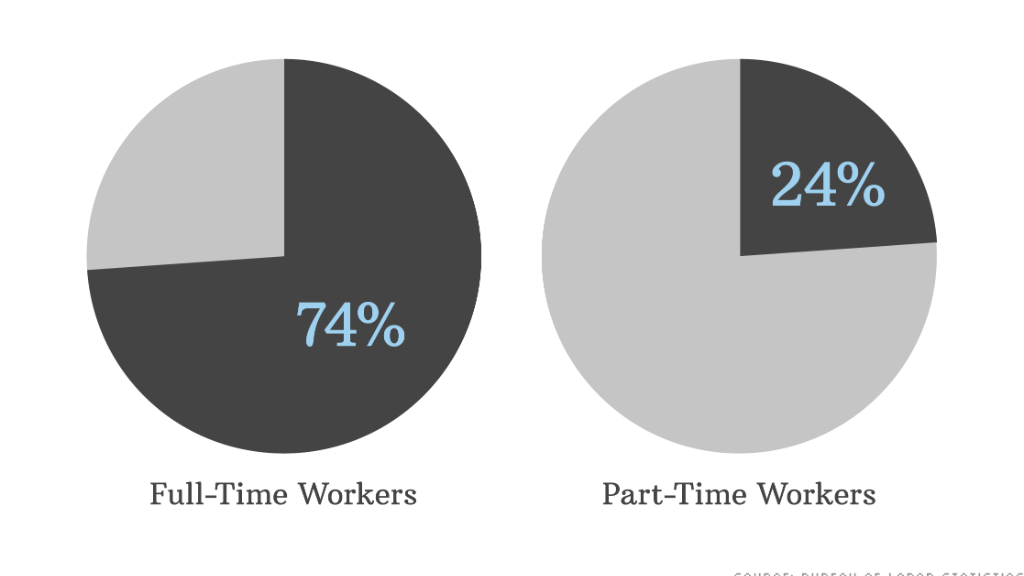
Coming to work sick can be miserable, but millions of American workers can't afford to stay home.
President Obama wants Congress to pass legislation that would allow employees to earn up to seven days of paid sick leave a year.
While federal law currently does not require sick leave, it's a common benefit for government workers and full-time employees at big corporations.
But nearly 43 million private-sector workers don't get paid sick leave, according to the White House.
So who are these workers?
They're usually part time: About 74% of full-time workers get paid sick leave, according to Bureau of Labor Statistics, while around 24% of part-time workers get the perk.

They work for small businesses: Smaller companies are more likely not to offer paid sick leave, largely because of cost. Around half of firms with 50 or fewer workers offer the benefit while 81% of those with 500-plus employees have it, according to Paul Harrington, director of the Center for Labor Markets and Policy at Drexel University.
Related: U.S. is 65th in world on gender pay gap
They're often in the service industry: Workers with service sector jobs, like food service or hospitality, are likely to go without sick time, along with those in health-care support services, including home health aids or dental assistants.
"Those are the exact type of jobs that you want people to stay at home because they have such high interactions with customers and co-workers," said Jessica Milli, a senior research associate at The Institute for Women's Policy Research.
Many are Hispanic: Hispanic employees are less likely to have paid sick leave than white, Asian or black workers, according to Milli, with less than half of Hispanic workers getting the benefit.
They're on the lower end of the income ladder: Government data show 90% of the top 10% of earners get paid sick time off, while 21% in the bottom 10% get it.
"Part of that is that you are more likely to be part time in the [lower bracket]," said Harrington.
Related: Behind the 78 cent wage gap
The costs and benefits:
The Labor Department puts the cost of paid sick leave at 34 cents an hour per worker, or about 1% of total compensation. To make up for the added cost, experts predict that employers could cut back on other compensation costs, like taking away paid holidays, lowering wages, or pulling back on hiring or raises.
But putting the cost of a mandate on the government could help smaller firms handle the burden.
"Paying the costs through unemployment insurance or disability or some other form of federal or state government [funds] might make the case easier to push forward," said Aparna Mathur, an economist at the right-leaning American Enterprise Institute.
Offering sick days often leads to increased productivity and reduced health-care costs for businesses. It also benefits children by allowing parents to stay home with a sick child.
"When we aren't operating at 100% ... that represents a cost to employers," said Milli. "Allowing them to stay home means a faster recovery and fewer co-workers getting sick also brings savings.


